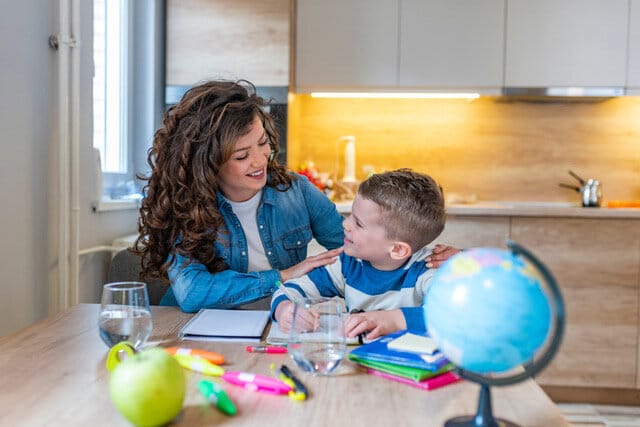What is OPOL?
One person, one language. Seems simple enough, doesn’t it? Especially when the “people” are parents in a household, trying to raise bilingual children! As the story goes, OPOL requires that each parent speak to the child/ren only in their dominant language. For example, if Mamon is French and Papa is Spanish, then Mom will communicate with the child only in French and Dad will communicate only in Spanish and voila, one bilingual child coming right up! Seems too good to be true? That’s because it is. Oh the strategy does work, no doubt there! But just like any other method, the key to its success is …drumroll please… consistency! Simple yet important decisions need to be made and adhered to. For example, when the family is together at the dinner table each evening, what language should be spoken there? These rules will encourage consistency and will play a significant role in the child’s retention of the languages, especially once they begin to interact with the world outside their home, where they would necessarily encounter the dominant language.
According to the experts…
Studies have shown that the one person one language approach needs to follow a rather strict regime for the formative years, in order to ensure that the dominant language does not… dominate. What tends to happen in this scenario is that the child will end up understanding the minority language but will not speak a word of it. That my friends, is not a win. What is of critical note for parents to remember is that you will not be the only person speaking to your child, so it is extremely important to curate a unique language experience in the home, to ensure the goals set are indeed met.
Annick De Houwer is a renowned linguist and researcher who has spent significant time examining this phenomenon. According to her work in Dutch/ English bilingual households, close to a quarter of these families had children who did not speak the minority language, the success rate of the one person one language approach being 74%. A significant difference was seen in bilingual households where one parent spoke Dutch and the minority language, while the other parent spoke only Dutch. The success rate of children becoming bilingual under these circumstances, was 36%, the majority of them growing up speaking only Dutch.
Now let’s make it work!
Now that we know for sure that OPOL works, let’s put practical things in place to make it work. Here are 3 quick suggestions on how to do so:
1. Be consistent.
We know, we know, it’s easy to give in to your child who does not want to talk to you in the designated language. You simply want to hop back over into their comfort zone and make it better. This tends to happen more with the minority language. One way to encourage consistency and combat the resistance is to ensure that fun activities are planned for your child weekly, in the foreign language. She will be so thoroughly engaged, she will not remember that the language was a problem! She may even begin to request these minority language play days, “difficult” language notwithstanding. #WIN
2. Plan ahead.
In the event of something like the dinner table debacle mentioned earlier, you will need to have a strategy planned for what to do when the entire family comes together. Maybe designate language days. This will help ensure the entire family is bilingual. What if the parent who speaks the dominant language is not fluent in the minority? These gatherings are a perfect time to learn!
3. Be innovative.
Pay attention to what works for your child and continue to try different things as the challenges present themselves. Raising a bilingual child is no easy feat, don’t be afraid to ask for help! We can partner with you doing Spanish immersion classes starting at $12 per class. Contact us at TruFluency Kids Spanish Immersion Online and we will only be more than happy to participate in your language acquisition journey.


